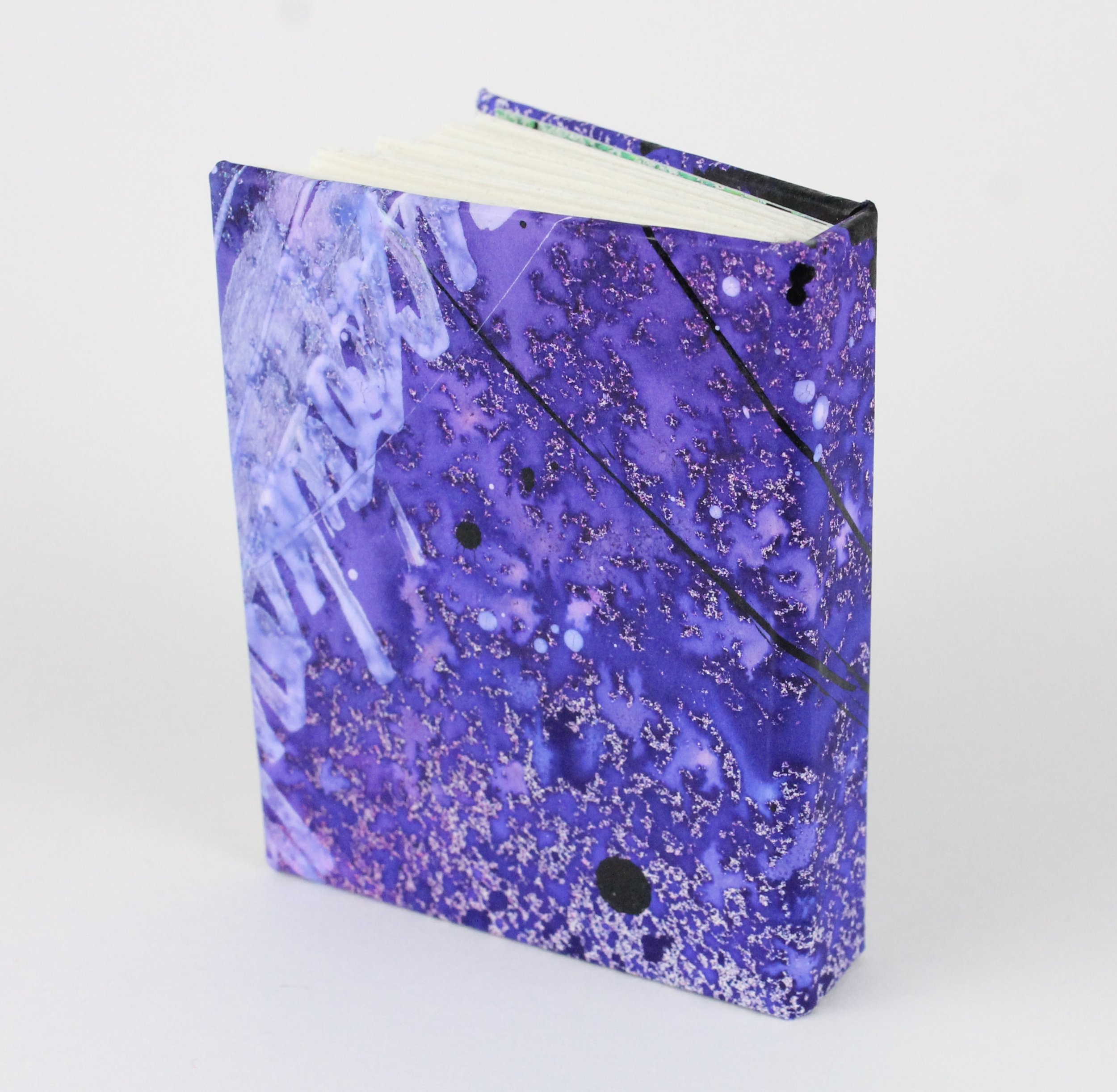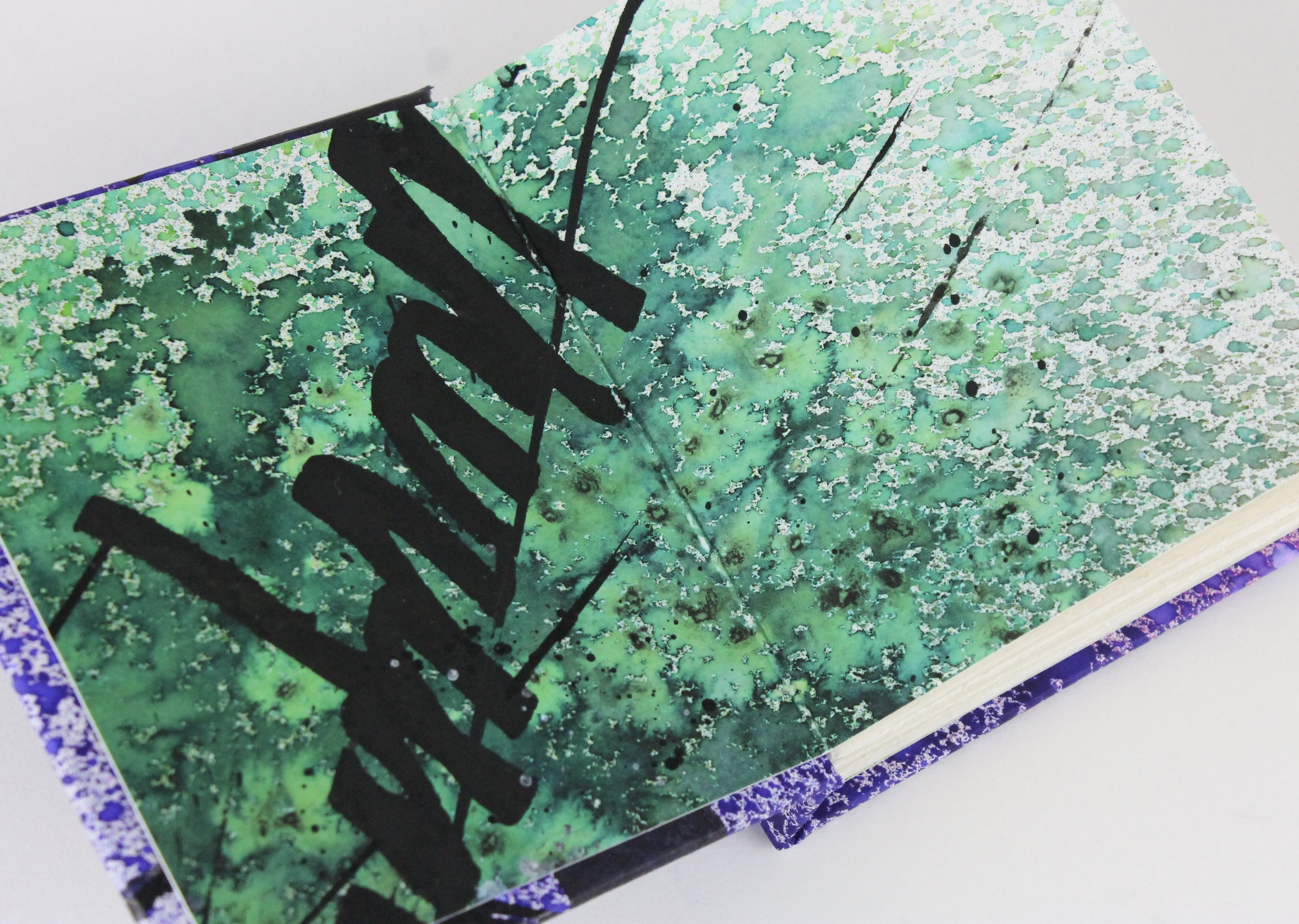In my last post, I talked about the different types of papers that one can use to pull prints. In this post, I will show you a small amount of the tools that I use to create the prints seen here.
In each photo, I will explain the tools that you see and how to find them.
Handmade Stamps Using Sticky Back Fun Foam, Garden Knee Pads and Reclaimed Cardboard
These mark marking tools are some of my all time favorites! I use them my handmade stamps in my prints the most often because they are truly original tools and they are CHEAP to make. I raid the recycling bin to find corrugated cardboard (which is a great stamp within itself). I buy the gardening knee pads when they go on sale in late fall or (if you have to have them NOW), I find them in abundance at Big Lots. You can buy sheets of sticky back fun foam at your local craft store.
I do not have any sort of pattern that I go for when I create my stamps. I cut organically and hope for the best. One of the reasons I love creating stamps this way is because of the SIZE I can make my stamps. I pull prints from a 9 x 12” gel plate. That is a lot of landscape to cover! I start with a large base (such as the kneeling pads or cardboard) and I cut foam to create the stamps. In some cases, I have taken foam scraps from students and have created stamps from the leftovers.
**Please note: If you like pristine stamps, this process is not for you! The stamps with the knee pads as a base are washable, but the cardboard backed have a limited life span since you cannot wash them.
If you like using your handwriting as a. mark making tools, these are for you! Chop sticks, skewers, pottery tools that I borrowed from my daughter (that are now mine) and some other tools that I do not have names for but use for writing. Printmaking is an unusual way to document your life. If you like to keep a daily record of your life, consider using handwriting in your prints.
Dollar Store Finds: Lego Plate, Altered Pool Noodle, Child’s Toy Block and Sponge Rollers
The Dollar Store is a great place to hunt for printmaking tools! Aim for the toy and craft sections to find the best tools. Dollar Store finds are as much fun to hunt for as the thrift store, organizing the house or raiding your child’s toy box. Once you train your brain to look at things laterally, there really is no limit as to where you can find a very cool printmaking tool.
Fabric Store Finds: Plastic Mesh Canvas
These plastic mesh canvases make their way into my art in many ways. I cut and alter them to get different looks when I print. These canvases come in many different shapes and sizes. I find them at my local fabric store near the yarn section. Plastic mesh canvases are not only great mark making tool, they make great stamps as well. This will add depth to your prints as you become more proficient in your printmaking process.
Hardware Store Finds: Plumbing Fittings and Texture Tool
The hardware store is an unlikely place to find printmaking tools but it is a gold mine! One of the best reasons to shop at the hardware store for art supplies is the price. The Plumbing section is one of my favorites. Plastic fittings cost less than a dollar and there are loads of shapes and sizes to choose from when it comes to printmaking. And, even better, you can wash these after you are done playing to extend the life of your tools.
The Texture Tool is super fun to play around with on your plate. Try using a push/pull method while making a print. It gives the look of a faux wood finish that will add visual interest to your collage papers.
Did you take an Artist Date to the local thrift or dollar store and find some fun and funky papers to start your printmaking paper journey? Did you manage to locate a sweet score in an unlikely place?
Now its time to start harvesting your mark making tools. Take a stroll around your house…what kind of unique tools can you find that you already own?
In next week’s post, I will talk about the types of paint and the tools I use to apply color that I use when printing. Do you want to check out my handmade collage paper stash? See what kind of effect each tool provides when pulling a print?





















